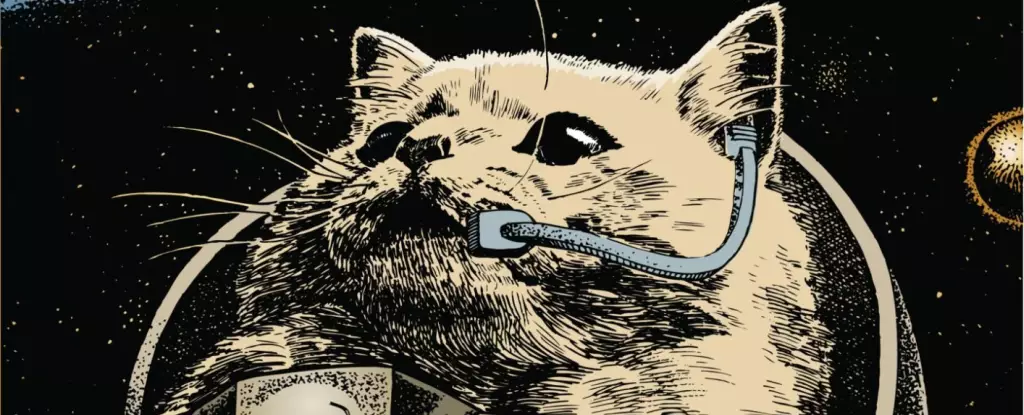Domestic cats, known for their agility and elegance, embody a unique blend of grace and precision in their movements. Among their most remarkable abilities is the astounding skill to land gracefully on their feet, an action so embedded in their natural instincts that it has sparked both admiration and scientific curiosity. The phenomenon of cats landing unscathed after falls has intrigued many, leading researchers to explore the mechanics behind this seemingly magical ability.
The Science of Falling: Understanding Feline Acrobatics
The fascination with this feline talent can be traced back to pioneering experiments in photography that aimed to capture the intricacies of a cat’s fall. In 1894, French scientist Étienne-Jules Marey used chronophotography to observe the unique twisting motion that cats execute during a fall. His findings revealed the cat’s methodical body manipulation that allows it to realign itself mid-air. This flipping ability, rather than being a mere fluke of nature, is a finely-honed skill that showcases the impacts of evolution on animal physiology.
Furthermore, the combination of the cat’s flexible spine and unique skeletal structure plays a critical role in enabling this acrobatic feat. Their bones are not only light but also possess an unparalleled flexibility that aids in their ability to maneuver through the air. By adjusting their limbs and utilizing their tails for balance, cats exhibit a near-impeccable ability to gauge their orientation before landing, reinforcing their reputation as agile creatures.
Fast forward to the 1950s, when researchers sought to challenge the boundaries of these natural abilities. During this period, the U.S. Air Force initiated daring experiments to test how these acrobatic reflexes would perform under conditions of weightlessness. Using specially-designed aircraft for parabolic flights—which simulate a zero-gravity environment—scientists investigated the implications of disorientation on feline movements. Dubbed the ‘vomit comet’ due to the nausea-inducing sensation it causes among passengers, these flights yielded surprising insights into the cat’s intrinsic navigational mechanisms.
The experiments included observing kittens aboard the Convair C-131 Samaritan, a plane specifically designed for such studies. The results were telling: while the cats exhibited a degree of disorientation due to the lack of gravitational reference, they still managed to execute twists and turns. This observation pointed to a fascinating aspect of feline intuition, suggesting that even in unfamiliar environments, cats are equipped with inherent physical adaptability demonstrated through their capability of reorienting themselves mid-fall.
The ramifications of these studies extended well beyond the feline world, influencing aspects of human physiology and space travel. The findings of these pioneering studies led to advancements in understanding how humans might also navigate weightlessness. In 1969, subsequent research employed mathematical modeling to elucidate how human bodies respond to freefall, paving the way for astronaut training methods that borrowed techniques from fallen cats.
Interestingly enough, playful reconstructions of a cat’s reflexes were made possible through entertaining experiments with gymnasts who practiced aerial movements on trampolines, mirroring the orientation changes seen in cats. This blend of research and human athleticism not only underscored the importance of studying animal behavior but also reinforced the invaluable connection between nature and scientific understanding.
In the grand scheme, domestic cats not only serve as companions but also bridge the gap between human inquiry and the natural world. Their extraordinary capabilities act as a catalyst for exploring complex topics such as balance, orientation, and even the effects of microgravity on both feline and human physiology. While the notion of sending cats into space may remain largely whimsical, the insights gained from studying these agile mammals have contributed significantly to our understanding of physics and biology.
The elegance with which domestic cats navigate the world continues to captivate not just pet owners but also scientists. As we strive to uncover the depths of knowledge behind their whooshing leaps and effortless falls, one thing remains clear: these furry animals are not only creatures of beauty but also symbols of the intricacies of nature that beckon exploration and understanding.

